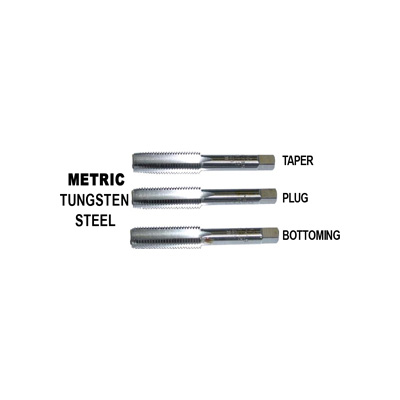



Taps and dies are tools used to create screw threads, which is called threading. Many are cutting tools; others are forming tools. A tap is used to cut or form the female portion of the mating pair (e.g., a nut). A die is used to cut or form the male portion of the mating pair (e.g., a bolt). The process of cutting or forming threads using a tap is called tapping, whereas the process using a die is called threading. Both tools can be used to clean up a thread, which is called chasing.
A tap cuts a thread on the inside surface of a hole, creating a female surface which functions like a nut.
Bottoming tap or plug tap has a continuous cutting edge with almost no taper — between 1 and 1.5 threads of taper is typical. This feature enables a bottoming tap to cut threads to the bottom of a blind hole. A bottoming tap is usually used to cut threads in a hole that has already been partially threaded using one of the more tapered types of tap; the tapered end ("tap chamfer") of a bottoming tap is too short to successfully start into an unthreaded hole. In the US, they are commonly known as bottoming taps, but in Australia and Britain they are also known as plug taps.
Intermediate tap, second tap, or plug tap has tapered cutting edges, which assist in aligning and starting the tap into an untapped hole. The number of tapered threads typically ranges from 3 to 5. Plug taps are the most commonly used type of tap.[citation needed] In the US, they are commonly known as plug taps, whereas in Australia and Britain they are commonly known as second taps.
Taper tap is similar to an intermediate tap but has a more pronounced taper to the cutting edges. This feature gives the taper tap a very gradual cutting action that is less aggressive than that of the plug tap. The number of tapered threads typically ranges from 8 to 10. A taper tap is most often used when the material to be tapped is difficult to work (e.g., alloy steel) or the tap is of a very small diameter and thus prone to breakage.
Tungsten steel (SKS2) straight flute hand taps for tapping both through and blind holes in unalloyed steels and non-ferrous metals.